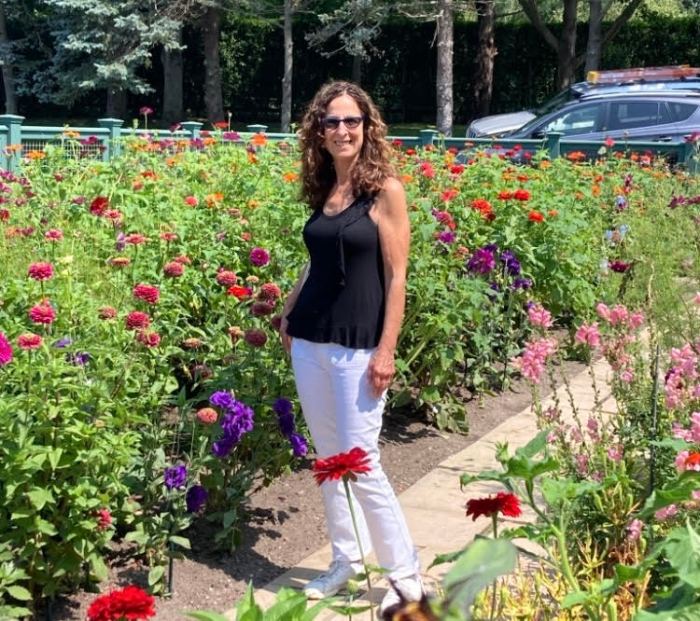My experiences from 1954 to 1962
The 50th reunion of the Great Neck North Class of ’67 this past June brought back memories of some of my earliest school days in Great Neck, revived an old friendship and reminded me of a lesson learned.

As a member of one of the founding families of Great Neck’s North Shore Hebrew Academy in 1954, I attended pre-K/nursery school in a gray building, seemingly a converted private home, located in the rear of the property where the Great Neck Synagogue now stands on Old Mill Road. I remember a shady oak tree that rose by the entrance, but school did not start well for me.
I can still recall my first day at age 5 1/2; I was not happy. My mother took me up the stairs to the front door of the school. I sat on the landing as she drove off. My heart sank. I could not understand why my mother left me. I cried and felt betrayed. After a while, I stopped crying but, instead of entering the building, I decided to walk home. It was more than a mile distance and somehow I managed to safely cross Middle Neck Road as I found my way. I eventually returned to nursery school and later took Hebrew lessons at the synagogue two or three afternoons a week until seventh grade.
In 1955, I was ready for kindergarten, but the new brick E.M. Baker School building near my home was under construction, so I was bussed to Saddle Rock School. At that time, a low row of hedges stood in the Saddle Rock playground, under the windows alongside the building, facing Bayview Avenue. The boys liked to hide behind those hedges and jump out, scaring the girls. But, it was first through sixth grades at Baker School that I remember most vividly.
The 10-minute walk on Baker Hill Road between my house on Ramsey Road and the old Baker School was a big part of my weekday world. My first-grade teacher, Miss Akers, taught us our letters in the front classroom that had windows looking out onto the road. Memorizing the road signs along Baker Hill on my way to school in the morning—Hartley, Chadwick, Plymouth and Warwick—and then, in reverse, on my way home in the afternoon, gave me great pleasure and helped me learn how to spell and read.
When I was a little older, I would bike up to school and sometimes, after class, continue down the other side of Baker Hill, coasting to Middle Neck and stopping at the Colony Stationery store, just a block north, to find a new magazine called Mad. In those days, I did not have enough allowance to actually buy a copy, so I would quickly scan as much of Mad as I could before the stationer caught me and put a stop to my free reading. But I soon became a regular reader of Mad and would start with my favorite part—the wordless, black-and-white Spy vs. Spy comic strip—a parody of the Cold War intrigue between the Soviet Union and the United States. This comic relief was in sharp contrast to being taught in elementary school to shelter under my desk as protection against an atomic bomb, a practice called Duck and Cover.

Third grade (1957–58) in the new building at Baker Hill, with Miss Kravitz as my teacher, was probably the most important elementary school year for me. I was challenged by the multiplication tables, but I avidly read the dictionary, learning new words and becoming an ace speller with a pretty good vocabulary. As the first kid in class to get glasses that year, I hid in the coat closet, too embarrassed to be seen by my classmates. My father assured me that by the time I graduated from high school, most of the kids would be wearing glasses. This advice comforted me at the time—and my father was right.
It was in Miss Kravitz’s class that I made a new friend—Ronnie Rowes. Ronnie’s home was only a block away from mine, on Wimbleton Lane just off Croyden Avenue, the road that ran parallel to Baker Hill. I was pleased to learn that the roads I was so familiar with on the way to school changed names and became Lanes as they crossed Croyden—so Hartley Road became Wimbleton Lane, Chadwick became Brampton Lane, Plymouth became Bellingham Lane, and so on. Croyden ended, as it still does, at a white cement wall with a staircase built perpendicularly into it. At the top of the staircase at that time, before the school was expanded, lay the Baker playing fields.

Ronnie and I would walk to and from school together, climbing and descending that staircase at the top of Croyden. One day, as Ronnie reminded me after the reunion, the cement wall was spray painted with the slogan “I Like Ike,” a reference to President Dwight D. Eisenhower. Graffiti was never common in Great Neck and political graffiti was almost nonexistent back then. But I remember that my reaction to seeing “I Like Ike” on the wall was to think “I’m Allied with Adlai.” Allied was one of my new words and the reference was to Adlai Stevenson, the Democratic candidate who had unsuccessfully opposed Ike in the 1952 and 1956 Presidential elections. Reconnecting with Ronnie, now a medical director in Denver, as a result of the reunion was one of the best parts of the event for me.
It wasn’t until fifth grade (1959–60), however, that I enjoyed my greatest elementary school triumph, and learned an important lesson about life.
I was a Cub Scout in Great Neck’s Troop 446; my mother was my pack’s co-den mother. When each of the packs in the troop had to put on a performance in the Baker School auditorium, my mother dressed us as members of a barbershop quartet, with red-and-white striped shirts and black bow ties. She taught us to sing “Up a Lazy River,” a song written by Hoagy Carmichael, which became a pop hit sung by Bobby Darin. I can still sing the complete song that begins:
Up a lazy river by the old mill run
That lazy hazy river in the noon day sun
Linger in the shade of an old oak tree
Throw away your troubles dream a dream with me.
As I sang this song over and over in order to memorize it, I came to think of it as being about my nursery school on Old Mill Road, with the shady tree that stood in front of it. When the pack sang the song for the troop, we received a standing ovation with cries for an encore, to which we responded. I remember feeling pride for myself and my pack’s achievement, and even more for my mother who had suggested the performance. But I also finally understood that when she took me to my first day at nursery school years before, my mother left me there for my own benefit. And, in my heart, I forgave her for that.
Blue skies up above
Everyone’s in love
Up a lazy river, how happy we will be
Up a lazy river with me.
Richard J. Gerber, a collectible book dealer in Lake Peekskill, an hour north of New York City, can be contacted through his website, www.rmgerberbooks.com.































